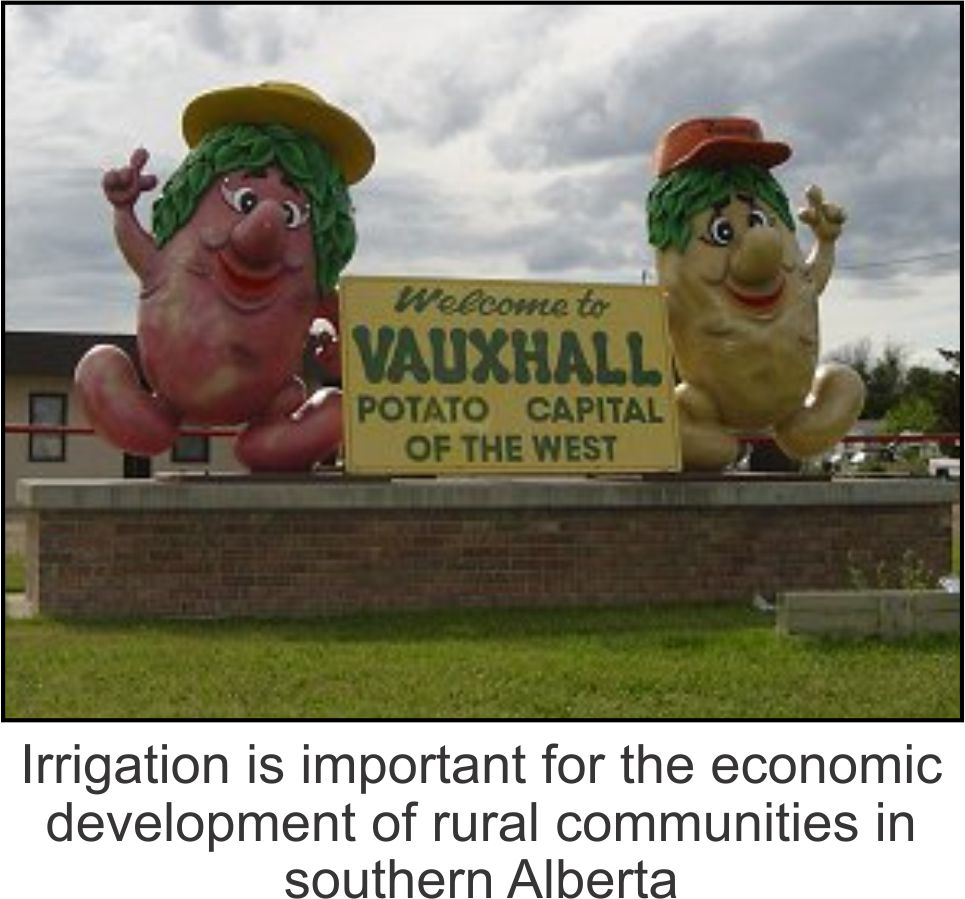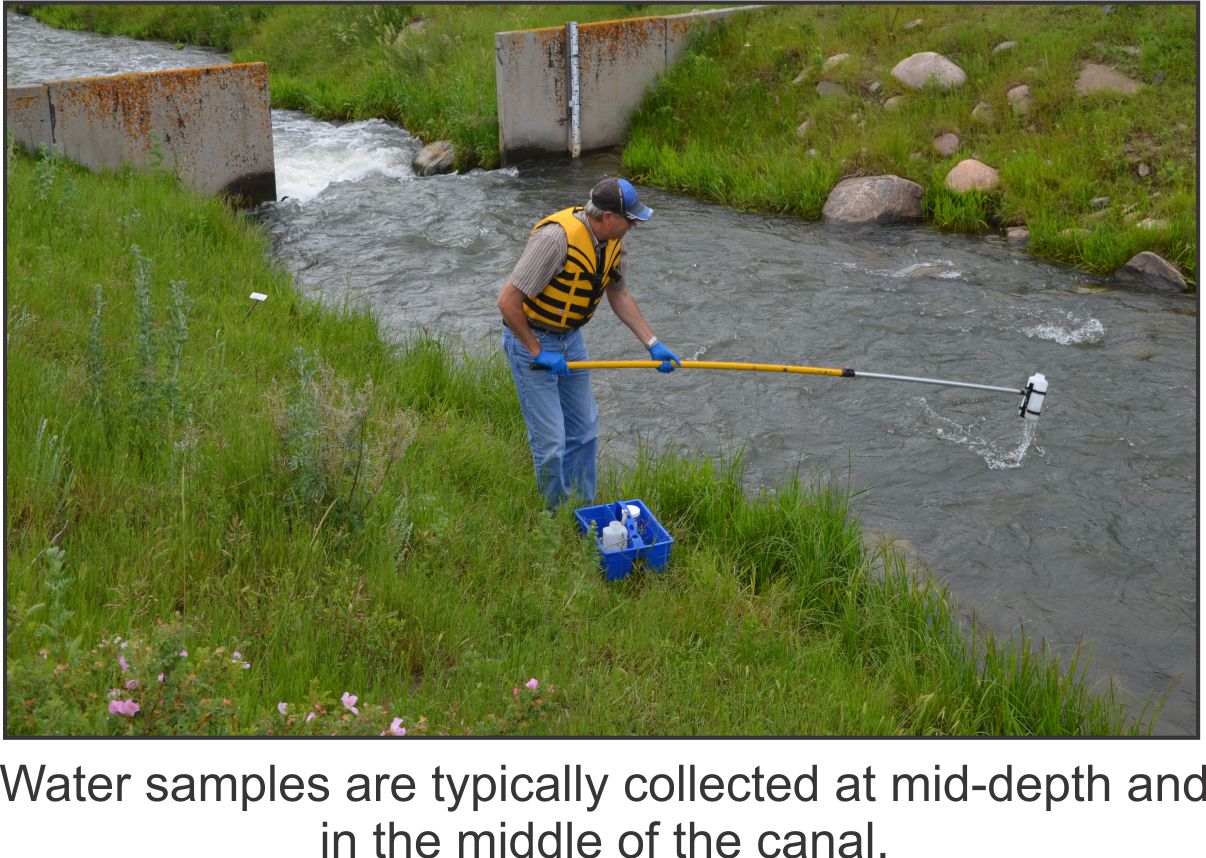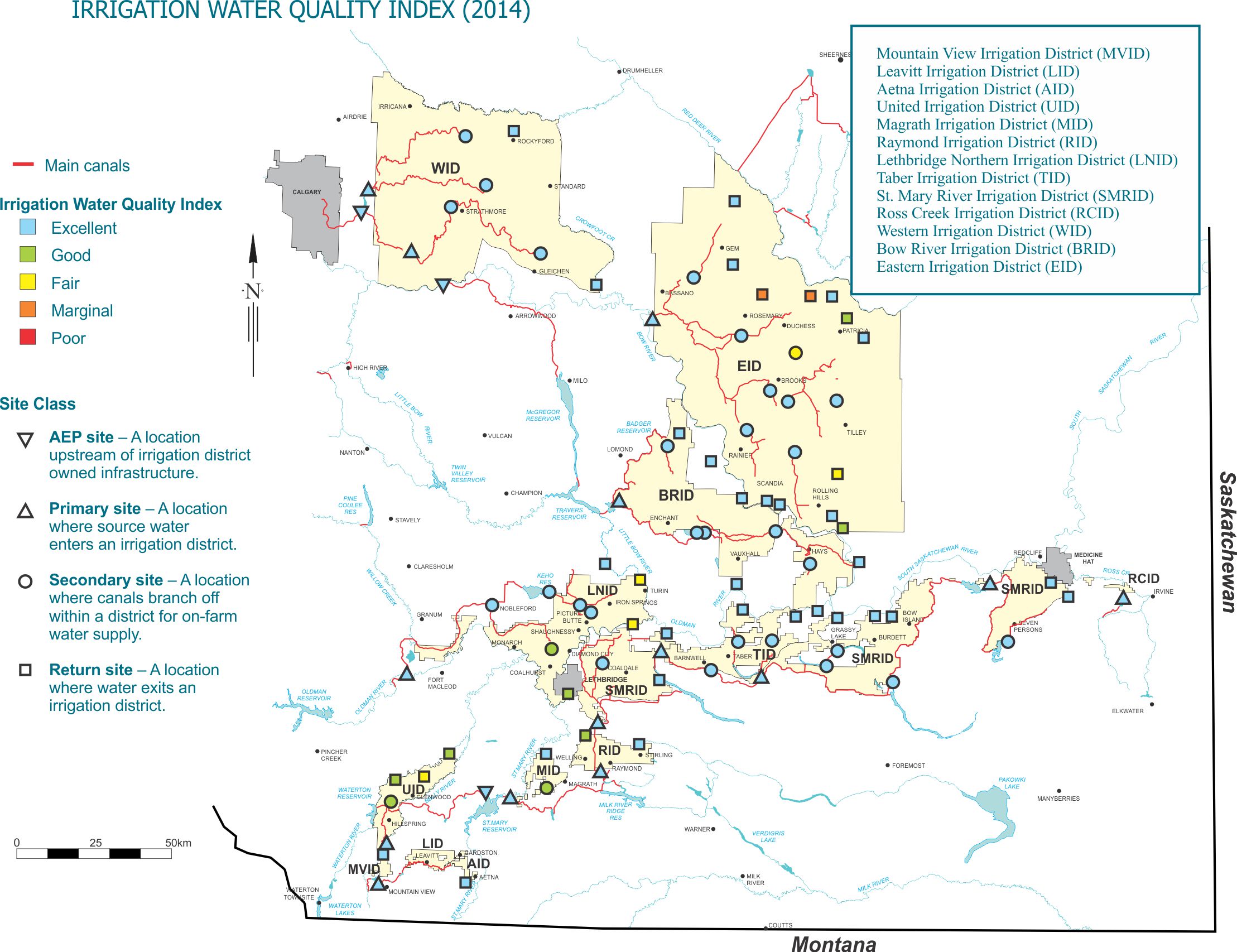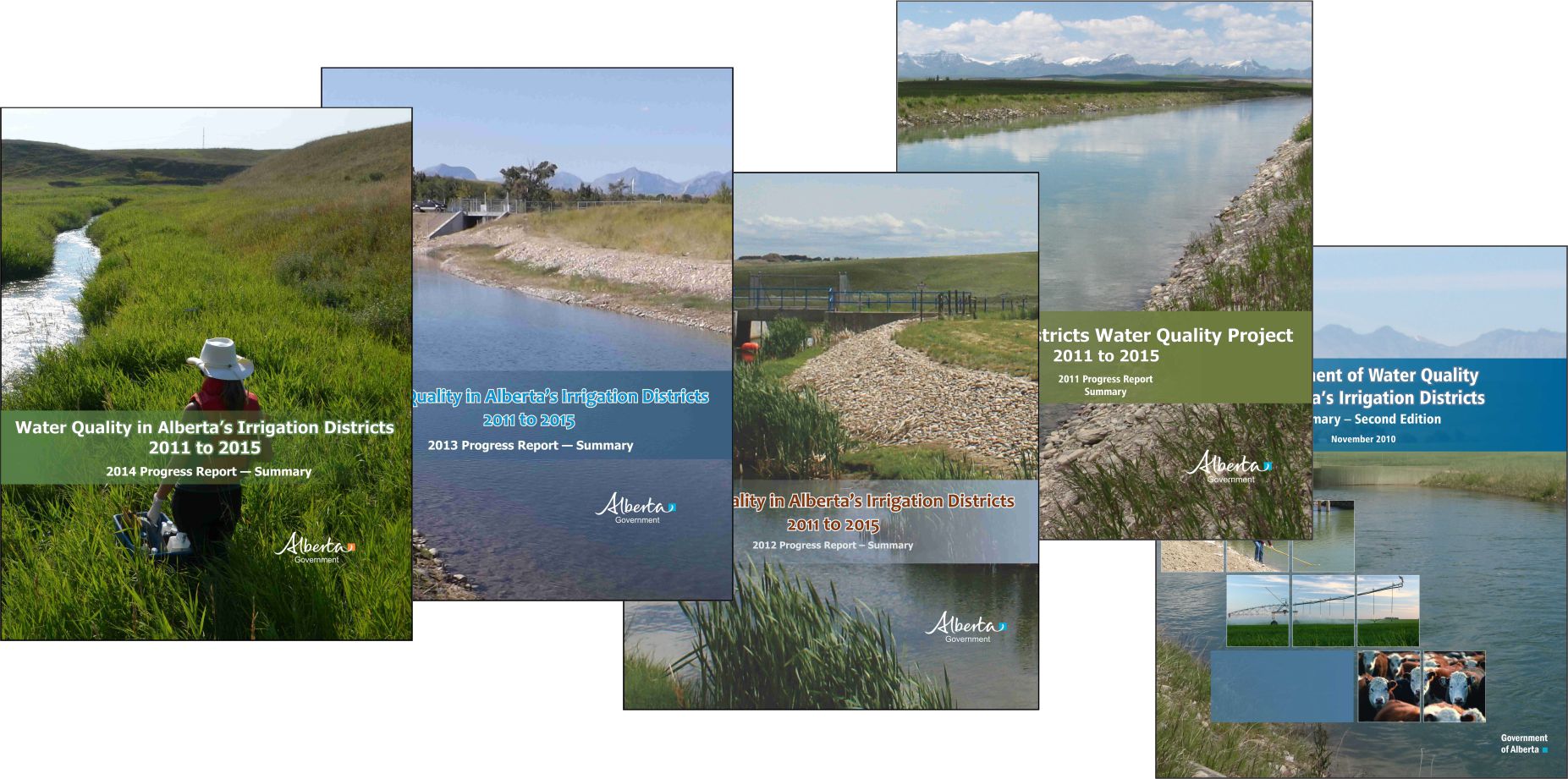| | Introduction | Objectives | Study design | Water quality results | Project partners | Publications | Links to other documents
Introduction
 Alberta has the largest irrigated area in Canada with nearly 680,000 hectares of irrigated land. More than 80% of this area is in 13 irrigation districts. Within Alberta's irrigation districts, there are more than 55 reservoirs and approximately 8,000 km of conveyance works, including canals and pipelines, which carry nearly two-billion m3 of water per year. Alberta has the largest irrigated area in Canada with nearly 680,000 hectares of irrigated land. More than 80% of this area is in 13 irrigation districts. Within Alberta's irrigation districts, there are more than 55 reservoirs and approximately 8,000 km of conveyance works, including canals and pipelines, which carry nearly two-billion m3 of water per year.
Good quality irrigation water is needed for all uses. Irrigation water is not only essential for agricultural production, it provides municipal water for more than 40 communities plus thousands of rural residents in Alberta. The irrigation infrastructure also provides habitat for wildlife and numerous recreational activities such as fishing, camping, and golfing.
Objectives
The project objectives are to assess the:
- quality of source water used for irrigation and livestock watering
- quality of irrigation water for recreational use and for the protection of aquatic life
- differences in water quality among the irrigation districts
- changes in water quality in relation to landscape and canal characteristics, and
- cumulative impact of irrigation returns on rivers
 Study Design Study Design
Approximately 90 sites were sampled within Alberta’s irrigation districts. The sites included source water located on main or lateral canals supplying water for on-farm use and return sites located where the water returned to the natural drainage systems.
From 2011 to 2015, samples were collected four times during the irrigation season (June to September) and analyzed for more than 160 parameters including:
- Nutrients (e.g. nitrogen and phosphorus)
- Salinity (e.g. electric conductivity, chloride)
- Biologicals (e.g. E. coli bacteria)
- Metals (e.g. arsenic, copper, iron, lead)
- Pesticides (e.g. 2,4-D, glyphosate, dicamba)
Water Quality Results
Water indices were calculated using environmental quality guidelines for Alberta surface waters. The indices provide a practical reporting method to assess the overall water quality among the sites and the years.

Water quality indices for irrigation, livestock watering, protection of aquatic life, and recreation were assessed and the irrigation index is shown. The average score for irrigation was excellent. Irrigation guideline exceedances for pesticides and coliforms remained the main cause of reduced water quality index scores at return sites.
Project Partners
Alberta Agriculture and Forestry
Alberta Irrigation Projects Association
Agriculture and and Agri-Food Canada
The project is guided by a steering committee composed of members from the irrigation districts, food processing industry, irrigators, Alberta Irrigation Projects Association, Alberta Environment and Parks, and Alberta Agriculture and Forestry.
Publications
Water Quality in Alberta's Irrigation Districts - 2011 to 2015
Annual Report - 2014
 Previous annual reports (2011, 2012, 2013) are available upon request. Previous annual reports (2011, 2012, 2013) are available upon request.
Assessment of Water Quality in Alberta's Irrigation Districts 2006 and 2007
Links to Other Documents
Irrigation Water Quality Safety for Fresh Field-grown Fruits and Vegetables
|
|